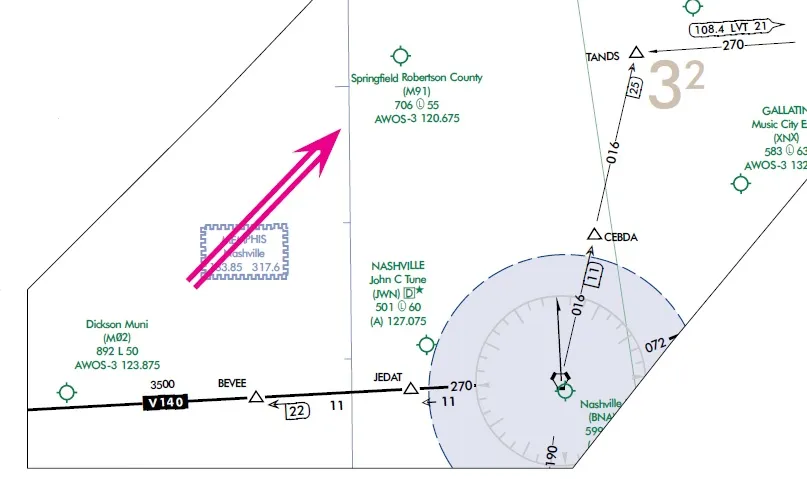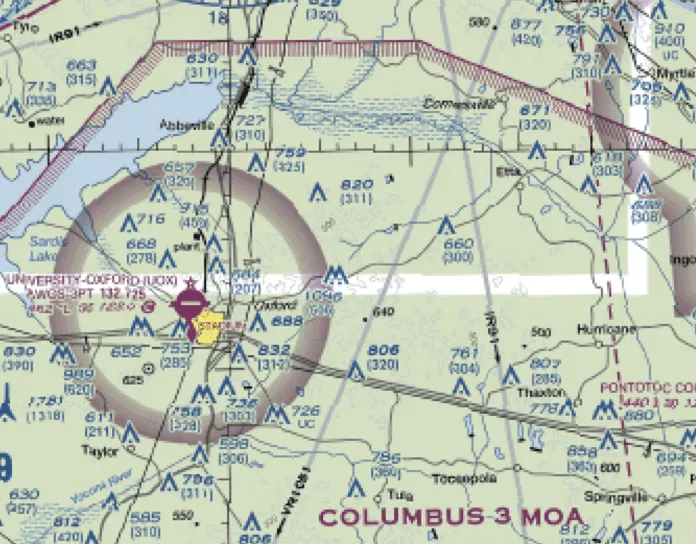Flying in the system is about, well, flying, and not so much about checking the boxes of 14 CFR Part 91-fill-in-the-blank. Yet the rules are always in the background, directing your tasks. You (usually) don’t check the regulations; moreover, they’re in different places in the rulebook, or in a different book altogether. And, they’re in different places in the rulebook, or in a different book. Wording may vary. Still, you do know how to cover the must-haves off the top of your head—you think.
Getting Started
As luck would have it, you get a Friday call at work requesting your presence at an out-of-state office location. Can you make it to Akron, Ohio, on Monday for lunch? Your trusty Cessna 210 can surely get there from Oxford, Mississippi in about four hours on a topoff. But with weather at home degrading to thunderstorms soon and a chance of it lingering through Monday, you decide to depart Saturday afternoon and make a family-visit stop in Lexington, Kentucky. That relieves you of a long flight early Monday while getting ahead of the weather.
But bombarded with family commitments, you haven’t had a chance to prep. Now you’re due for wheels-up in an hour, with briefing, filing and preflighting to accomplish (not including the half-hour drive to the airport).
A glance at the online weather chart shows the 2.5-hour flight to KLEX will take place in medium-IFR conditions. It’s at least 2000-6 here, with a line of thunderstorms arriving a few hours earlier than forecast.
Impressive—a four-minute briefing that covers the essentials. What about charts and airport information? Since you just updated the EFB, just grab and go. Yet there’s more to review if you were to fully comply with the ground-floor reg, §91.103 – “Preflight action.” It starts: Each pilot in command shall, before beginning a flight, become familiar with all available information concerning that flight. Notice it says “before” and “all.” Then it gets more specific:
This information must include – (a) for a flight under IFR or a flight not in the vicinity of an airport, weather reports and forecasts, fuel requirements, alternatives available if the planned flight cannot be completed, and any known traffic delays of which the pilot in command has been advised by ATC;…
Weather’s covered, so on to fuel, which overlaps with the requirement for alternatives. For IFR, that’d be another rule, §91.169 (flight plan information). That has a mandate to include an alternate airport if the weather requires it. The “1-2-3” rule in (b)(2)(i) is in effect for Lexington, which has a Terminal Aerodrome Forecast with ceilings forecast for 1000 feet, visibility three miles for the two hours of your arrival window. You’ve used Frankfort (KFFT) to the northwest as the alternate before—and today it will qualify if you use the Lexington TAF—17 miles and under two gallons away. Add that extra bit to your preferred one-hour reserve and the flight requires 50 gallons. You last flew for 2.5 hours after a topoff to 90 gallons, so you won’t order fuel.
Traffic delays? That’s tougher to track down “before beginning a flight” and they generally apply to the big commercial hubs (there’s an FAA webpage for that). But you can ask about any reports when getting your route clearance. The next item in §91.103 also has some things that apply to you:
(b) For any flight, runway lengths at airports of intended use, and the following takeoff and landing distance information:
(1) For civil aircraft for which an approved Airplane or Rotorcraft Flight Manual containing takeoff and landing distance data is required, the takeoff and landing distance data contained therein….
For your aircraft on a cool day like this, runways of at least 3000 feet are more than enough to preclude takeoff/landing calculations. So at the very least, review the destination and alternate. And you won’t have to memorize everything; just carry those details on the flight.
The aircraft manual, charts and the IFR flight plan should, of course, always be onboard. Since you’re prone to forgetting stuff on the desk, master copies and a backup tablet always remain in the aircraft.
Surprise Notice
So far so good. But in spite of the items listed and the blanket requirement for “all available information,” one of the biggest pieces doesn’t get a mention in the reg: NOTAMs (Notices to Air Missions). Those are available via a number of sources, all electronic by now, including the FAA’s NOTAM home page.
And “NOTAMs” does appear in the AIM version of §91.103 (see 5-1-3): (b) Preflight. 14 CFR §91.103, Preflight Action directs pilots to become familiar with all available information concerning a planned flight prior to departure, including NOTAMs. Not only that, FAA lawyers weighed in on that some years back, confirming that reviewing NOTAMs is indeed part of preflight requirements.
Duly noted; Oxford’s NOTAMs say the LOC and ILS 9 are unavailable without appropriate RNAV equipment (which you have). Lexington has one that says Runway 4/22 is closed for the next few mornings. There’s 9/27, and presumably ATIS and ATC would’ve kept you in the loop on that one, but you score points for having all this ahead of time. And finally, the chart overlay doesn’t show TFRs.
However, there’s one right at Oxford: “TFR 0/0367: Football Game—Troy at Ole Miss—Kickoff at 20:00Z …. SFC-3000 AGL. Will be live in 45 minutes.”
You’d forgotten about the game, and with the airport’s location north of the stadium, you should’ve checked that well in advance. If you get delayed you could also get weathered out.
Note that TFRs for major sporting events and airshows do appear on updated chart overlays (both on EFBs and some websites), but not on the FAA NOTAM Web page, even if you search the airport ID. Almost got trapped here, and now nearly 20 minutes has lapsed getting “all information,” so the time pressure you bypassed by leaving today ahead of the weather is back on.

But Wait! There’s More!
As for getting to Lexington, you expedite by using the auto-routing on your app to get you out of the Columbus 3 MOA at Oxford and then around Columbus 4 before swinging further northeast. The dearth of RNAV waypoints leaves a small selection of airports, can you use those? Sure, you can use airport identifiers as waypoints, especially when an associated navaid isn’t quite in the same spot. ATC on occasion will use ‘em for convenience too. In this case, you get to overfly M91, Springfield Robertson County Airport in Tennessee.
Almost ready. What’s quickest? Air-to-ground via the Tupelo RCAG? The local GCO? Rather than juggling radios, pencils and taxiing, just call from the cellphone when you get to the hangar (and don’t write while driving).
But that time-saver gets eaten up with another hitch during preflight: There’s less fuel in the tanks than you thought. Do you launch with what you have? You’ll need an approach at Lexington, and to comply with fuel requirements (§91.167), you’ll need enough fuel to land there, fly to the alternate, and have 45 minutes’ cruising reserve. A quick mental calculation costs you half a minute. The 28 gallons in the tanks will get you to Lexington, but without a decent reserve, much less the alternate-and-45 minutes-beyond rule.
Sigh … Now you need a quick-turn fuel stop on the way to Lexington. Must you amend the flight plan and get another clearance? On “paper,” yeah.
As far as the FAA knows, you’re bound for Lexington, even though you fully intend to go to Springfield, M91, for fuel. It’s easy to amend en route. The worst-case scenario is having an emergency diversion and someone flagging your “paper trail” and… Okay, take the two minutes to split the trip into two flight plans. Bonus: M91 has self-serve fuel (moderately priced) and it’s right on the route.
Haven’t even started up yet and you’ve hacked through a jungle of must-dos. The final call to ATC for an IFR release goes quickly, and you’re airborne just a couple of minutes behind. There’s a mental break cruising at 7000 feet until it’s time to set up for M91.
Good thing you checked everything from NOTAMs to airport details and made some executive decisions that were both legal and safe. And you’ve learned (the hard way) that things like NOTAMs might require more than one source. Easier said than done, but there’s a payoff in having a consistent do-list, then trying hard to carve out enough time to do it right. By the way, that applies to in-flight tasks, too.
Elaine Kauh is a flight instructor in eastern Wisconsin. Among her favorite IFR hacks is saving routes with the relevant charts on her EFB and naming them with the airports, favorite alternates, and fuel burn.





